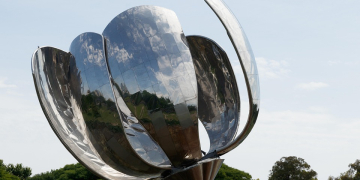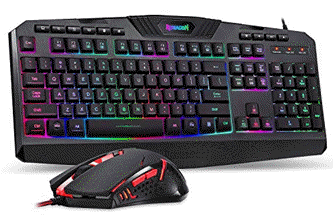2025-02-25 06:43:00
www.pcgamer.com

Burn-in, it’s the final frontier for OLED technology. Fix that, and we can all ditch our LCD panels, right? Well, according to one year-long test, we’re tantalisingly close to that outcome, but not quite there.
Monitors Unboxed has posted its one-year follow up of the MSI MPG 321URX, the very same model we tested last summer. It’s been intentionally using the display in the worst possible way for an OLED, namely as a desktop production screen for work and video editing and absolutely no gaming at all.
Roughly, that’s about eight hours a day on the Windows desktop with worst case scenario settings including Windows Light mode, not auto-hiding the task bar and so on. In fact, Monitors Unboxed also only allowed the MSI MPG 321URX’s pixel cleaning and compensation cycles to run every eight hours instead of the recommended every four.
All told, Monitor Unbox estimates something in the region of 2,700 to 3,000 hours racked up. The result? A very slight line down the middle of the display that’s a consequence of routinely running two main application windows side-by-side, plus a touch of burn in where the taskbar resides.
It’s really important to note that both of these “burn-in” remnants are just barely visible and even then only on certain shades of grey background. Monitors Unboxed says that the burned in areas are entirely invisible most of the time and barely a distraction when they are.
Still, there is some burn-in, it’s not absolutely zero. Interestingly, Monitors Unboxed has found that the progression hasn’t been entirely linear. At nine months the burn-in seemed to have regressed a little compared with six months. At one year, it’s back to roughly where it was at six months. That probably reflects the impact of the compensation cycles.
Monitors Unboxed says that its usage has been particularly heavy and suboptimal for an OLED and that it equates to at least 18 months and more likely two years of normal “mixed” use of desktop work and gaming for most people. That means after two years, most users should expect to see very little burn in.
One other detail that’s worth noting is that Monitors Unboxed has been running the MSI MPG 321URX at 200 nits. The panel can be set to up to 250 nits, and the brighter you run a monitor, the worse the burn-in would normally be.
My experience with the MSI MPG 321URX would certainly see me maxing the SDR brightness out to 250 nits, day to day. Even at that setting, it’s only just bright enough for my preferences. Then again, I use dark mode for just about everything as a matter of course, so maybe that would make taskbar burn-in a non-issue.
Overall, it’s hard to know exactly what to conclude from this test. On the one hand, the results are probably better than you might fear from this worst-case scenario. On the other, the fact that the panel showed any signs of burn-in at all remains a worry.
How you use an LCD monitor, in comparison, just isn’t something you need to think about. Meanwhile, as Monitors Unboxed says, if you’re spending $1,000 on a monitor, you should reasonably be able to expect it to last for about five years without major issues. And on the basis of this test, it’s still not totally clear that would be the case.
Monitors Unboxed plans to keep going. So, if they clock up another year, that’ll be around four years worth of up time for a “normal” PC enthusiast and pretty close to an idea of how things look after really long term use.
What’s more, Samsung, which makes the QD-OLED panel in question, has a new generation of QD-OLED which was announced at CES and is claimed to be yet more robust.
My sense is that the 3rd Gen QD-OLED panel used in the MSI MPG 321URX is already fairly resistant to burn-in. So, if Samsung really has made further progress with the latest panel tech announced in January, then burn-in should really have been relegated to a non-issue.
All the signs look good, but that will, of course, need to be proven in the field. The reality is it will take time. That new panel tech is only just now being put into displays, so that final reassurance is still a few years away. Watch this space.
Take your gaming to the next level! The Redragon S101 RGB Backlit Gaming Keyboard is an Amazon’s Choice product that delivers incredible value. This all-in-one PC Gamer Value Kit includes a Programmable Backlit Gaming Mouse, perfect for competitive gaming or casual use.
With 46,015 ratings, an average of 4.6 out of 5 stars, and over 4K+ bought in the past month, this kit is trusted by gamers everywhere! Available now for just $39.99 on Amazon. Plus, act fast and snag an exclusive 15% off coupon – but hurry, this offer won’t last long!
Help Power Techcratic’s Future – Scan To Support
If Techcratic’s content and insights have helped you, consider giving back by supporting the platform with crypto. Every contribution makes a difference, whether it’s for high-quality content, server maintenance, or future updates. Techcratic is constantly evolving, and your support helps drive that progress.
As a solo operator who wears all the hats, creating content, managing the tech, and running the site, your support allows me to stay focused on delivering valuable resources. Your support keeps everything running smoothly and enables me to continue creating the content you love. I’m deeply grateful for your support, it truly means the world to me! Thank you!
|
BITCOIN
bc1qlszw7elx2qahjwvaryh0tkgg8y68enw30gpvge Scan the QR code with your crypto wallet app |
|
DOGECOIN
D64GwvvYQxFXYyan3oQCrmWfidf6T3JpBA Scan the QR code with your crypto wallet app |
|
ETHEREUM
0xe9BC980DF3d985730dA827996B43E4A62CCBAA7a Scan the QR code with your crypto wallet app |
Please read the Privacy and Security Disclaimer on how Techcratic handles your support.
Disclaimer: As an Amazon Associate, Techcratic may earn from qualifying purchases.














































































